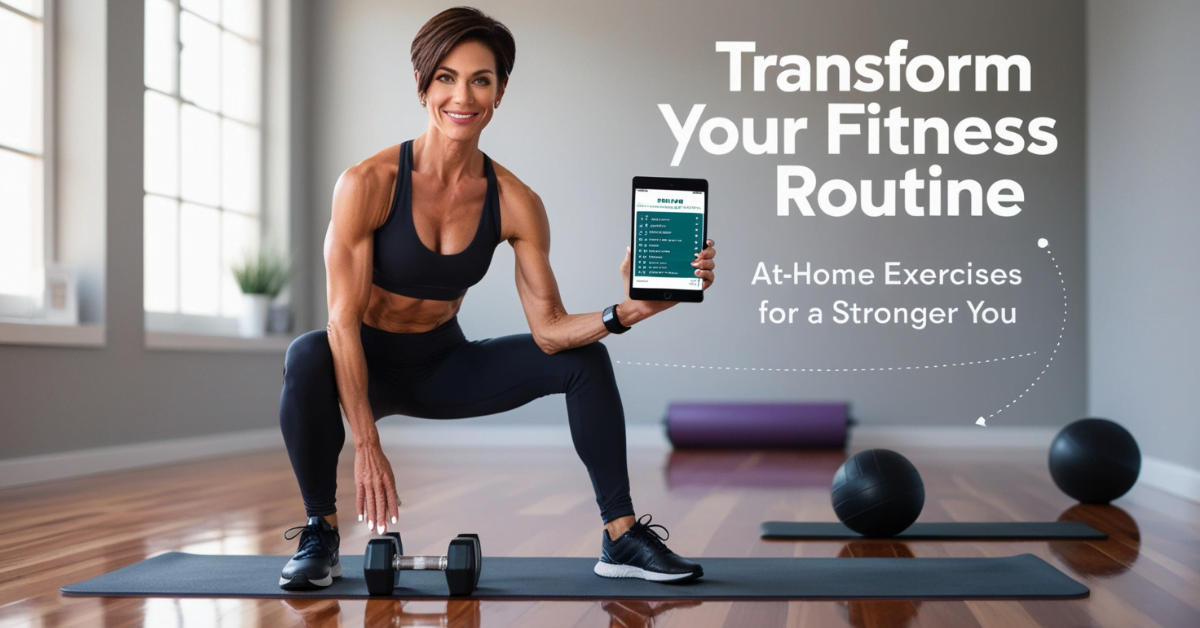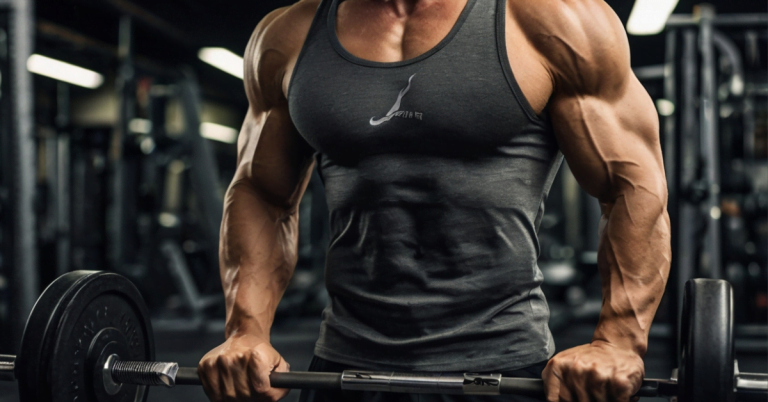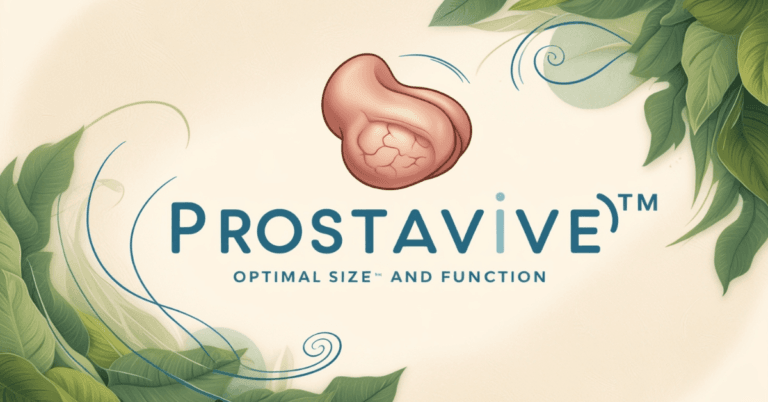30 At-Home Exercises to Transform Your Fitness Routine

There has been a trend of home exercises, especially for those who have tight schedules or are challenged to find time to get to a fitness facility. Whether one is new to the fitness lifestyle or a fitness enthusiast who wants to improve their style, having different types of exercises for different levels will enhance the achievement of the intended result. There are 30 basic functional exercise moves featured in this guide that are grouped into beginner, intermediate, and advanced workout sequences to help you progress through a comprehensive workout plan. These exercises can be done with the least of equipment which can make anyone get fit without having to leave the comfort of their home.
Beginner Routine
Bridge
Activate your core and posterior chain (a fancy term for the backside of your body) with a bridge. This is a great exercise to use as a warmup.
Directions:
Lie on your back with your knees bent, feet flat on the floor, and your arms extended by your sides.
Pushing through your feet and bracing your core, raise your bottom off the ground until your hips are fully extended, squeezing your glutes at the top.
Slowly return to the starting position and repeat.
Chair Squat
A beginner-friendly version of the squat that helps you learn the correct form while reducing the risk of injury.
Directions:
Stand in front of a chair with your feet shoulder-width apart.
Lower your body down to sit on the chair, keeping your chest up and back straight.
Push through your heels to return to the standing position and repeat.
Knee Pushup
This modified pushup reduces the load on your upper body, making it perfect for beginners.
Directions:
Start in a plank position with your knees on the ground and your body forming a straight line from head to knees.
Lower your chest towards the ground, keeping your elbows at a 45-degree angle.
Push back up to the starting position and repeat.
Stationary Lunge
A lower-body exercise that targets the quads, hamstrings, and glutes.
Directions:
Stand with your feet together, then take a step forward with one foot.
Lower your body until both knees are bent at about 90-degree angles.
Push through the heel of your front foot to return to the starting position and repeat on the other side.
Plank to Downward Dog
Combines core strengthening with a stretch for the hamstrings and calves.
Directions:
Start in a plank position with your hands under your shoulders and your body in a straight line.
Push your hips up and back into a Downward Dog position, keeping your legs straight and your heels reaching toward the ground.
Return to the plank position and repeat.
Straight-Leg Donkey Kick
Targets the glutes and hamstrings.
Directions:
Start on all fours with your hands under your shoulders and knees under your hips.
Extend one leg straight back and up, squeezing your glute at the top.
Lower back to the starting position and repeat on the other side.
Bird Dog
A core and balance exercise that also strengthens the lower back.
Directions:
Start on all fours with your hands under your shoulders and knees under your hips.
Extend one arm straight forward and the opposite leg straight back, keeping your body in a straight line.
Hold for a few seconds, then return to the starting position and repeat on the other side.
Forearm Plank
A core exercise that also engages the shoulders and glutes.
Directions:
Start in a plank position with your forearms on the ground and your body forming a straight line from head to feet.
Hold this position for as long as possible, keeping your core engaged.
Side-Lying Hip Abduction
Targets the outer thighs and hips.
Directions:
Lie on your side with your legs stacked and your head resting on your lower arm.
Lift your top leg as high as possible without moving your upper body.
Lower back to the starting position and repeat on the other side.
Bicycle Crunch
A dynamic core exercise that targets the obliques.
Directions:
Lie on your back with your hands behind your head, your legs lifted, and your knees bent at 90 degrees.
Twist your body to bring your right elbow towards your left knee while extending your right leg.
Switch sides, bringing your left elbow towards your right knee, and repeat in a cycling motion.
Intermediate Routine
Single-Leg Bridge
A more challenging version of the bridge that isolates each leg.
Directions:
Lie on your back with one knee bent and the other leg extended straight.
Pushing through your foot, raise your hips off the ground while keeping your extended leg aligned with your body.
Lower back down and repeat on the same leg before switching sides.
Squat
A fundamental lower-body exercise that strengthens the quads, hamstrings, and glutes.
Directions:
Stand with your feet shoulder-width apart.
Lower your body as if you’re sitting back in a chair, keeping your chest up and knees behind your toes.
Push through your heels to return to the standing position and repeat.
Pushup
A classic upper-body exercise that works the chest, shoulders, and triceps.
Directions:
Start in a plank position with your hands slightly wider than shoulder-width apart.
Lower your body until your chest nearly touches the ground, keeping your elbows at a 45-degree angle.
Push back up to the starting position and repeat.
Forward and Backward Lunge
A compound movement that targets the entire lower body.
Directions:
Stand with your feet together and take a step forward with one foot, lowering your body into a lunge.
Push back to the starting position and immediately step backward with the same foot, lowering into a reverse lunge.
Repeat on the same leg before switching sides.
Pike Pushups
A shoulder-intensive pushup variation.
Directions:
Start in a Downward Dog position with your hips up and back.
Lower your head towards the ground, bending your elbows.
Push back up to the starting position and repeat.
Kneeling Squat
A squat variation that targets the glutes and quads.
Directions:
Start kneeling on the ground with your knees hip-width apart and your hands on your hips.
Lower your hips to sit back on your heels, then push through your knees to return to the starting position and repeat.
Superman
Strengthens the lower back and glutes.
Directions:
Lie face down with your arms extended in front of you.
Lift your arms, chest, and legs off the ground simultaneously.
Hold for a few seconds, then lower back to the starting position and repeat.
Plank with Alternating Leg Lift
Adds a stability challenge to the standard plank.
Directions:
Start in a plank position with your hands under your shoulders and your body in a straight line.
Lift one leg off the ground, keeping it straight and engaging your glutes.
Lower back down and repeat with the other leg.
Kneeling Side Plank with Hip Abduction
Targets the obliques and outer thighs.
Directions:
Start in a side plank position on your knees with your bottom forearm on the ground and your top hand on your hip.
Lift your top leg as high as possible without moving your upper body.
Lower back down and repeat on the same side before switching.
Dead Bug
A core exercise that promotes stability and coordination.
Directions:
Lie on your back with your arms extended towards the ceiling and your legs lifted, knees bent at 90 degrees.
Lower your right arm and left leg towards the ground simultaneously, keeping your lower back pressed into the floor.
Return to the starting position and repeat on the other side.
Advanced Routine
Single-leg bridge with leg-extended
Adds an extra challenge to the single-leg bridge by extending the raised leg.
Directions:
Lie on your back with one knee bent and the other leg extended straight up.
Pushing through your foot, raise your hips off the ground while keeping your extended leg straight and in line with your body.
Lower back down and repeat on the same leg before switching sides.
Overhead Squat
A full-body exercise that requires strength, mobility, and coordination.
Directions:
Stand with your feet shoulder-width apart and hold a broomstick or light bar overhead with a wide grip.
Lower your body into a squat while keeping the bar overhead and your chest up.
Push through your heels to return to the standing position and repeat.
One-Legged Pushup
Increases the difficulty of a pushup by adding a balance challenge.
Directions:
Start in a plank position with one leg lifted off the ground.
Lower your body until your chest nearly touches the ground, keeping your elbows at a 45-degree angle.
Push back up to the starting position and repeat before switching legs.
Jumping Lunges
A plyometric exercise that targets the lower body and improves explosiveness.
Directions:
Start in a lunge position with one foot forward and the other back.
Jump up and switch legs in the air, landing in a lunge with the opposite leg forward.
Repeat, alternating legs with each jump.
Elevated Pike Pushups
Increases the intensity of pike pushups by elevating the feet.
Directions:
Place your feet on an elevated surface like a chair or bench and start in a Downward Dog position.
Lower your head towards the ground, bending your elbows.
Push back up to the starting position and repeat.
Kneeling Squat with Jump
Adds a plyometric element to the kneeling squat.
Directions:
Start kneeling on the ground with your knees hip-width apart and your hands on your hips.
Lower your hips to sit back on your heels, then explode up into a jump from the kneeling position.
Land softly back on your knees and repeat.
Advanced Bird Dog
A more challenging version of the Bird Dog that requires greater balance and stability.
Directions:
Start on all fours with your hands under your shoulders and knees under your hips.
Extend one arm straight forward and the opposite leg straight back, keeping your body in a straight line.
Add a crunch by bringing your elbow and knee together under your body before extending them again.
Repeat on the same side before switching.
One-Leg Forearm Plank Hold
Increases the difficulty of the forearm plank by lifting one leg.
Directions:
Start in a forearm plank position with your body forming a straight line from head to feet.
Lift one leg off the ground and hold for as long as possible.
Lower back down and repeat with the other leg.
Side Plank with Hip Abduction
Combines the side plank with a hip abduction for a greater challenge.
Directions:
Start in a side plank position with your bottom forearm on the ground and your top hand on your hip.
Lift your top leg as high as possible while keeping your upper body steady.
Lower back down and repeat on the same side before switching.
Hollow Hold to Jackknife
A core exercise that combines static and dynamic movements.
Directions:
Start lying on your back in a hollow hold position with your arms extended overhead and your legs lifted off the ground.
Perform a jackknife by bringing your arms and legs together to meet over your torso.
Return to the hollow hold position and repeat.
Conclusion
These 30 moves have individual beginner, intermediate, and advanced routines and are a great home fitness program. When going through these exercises, there is a possibility that one can gain strength, increase the range of motion as well as gain fitness. Before starting any of the movements, ensure that you do it correctly and slowly to gain the maximum results from the training as well as reduce the chances of getting injured. Happy training!
FAQ
Do I need any special equipment for these exercises?
Most of the exercises in this guide require minimal to no equipment. However, having a yoga mat, a sturdy chair, and possibly some light weights or resistance bands can enhance your workout experience.
How often should I perform these workouts?
It depends on your fitness level and goals. For beginners, starting with 2-3 times per week is a good approach. As you progress to intermediate and advanced routines, you can increase the frequency to 4-5 times per week, ensuring you have rest days for recovery.
How should I warm up before starting these exercises?
A good warm-up is crucial to prepare your body for exercise and prevent injury. Spend 5-10 minutes doing light cardio such as brisk walking, jogging in place, or jumping jacks, followed by dynamic stretches like arm circles and leg swings.
Can I combine exercises from different routines?
Yes, you can mix and match exercises from different routines to create a customized workout that suits your fitness level and goals. Just be mindful of balancing the intensity to avoid overtraining.
How many sets and repetitions should I do?
For beginners, start with 2-3 sets of 10-15 repetitions for each exercise. Intermediate and advanced individuals can aim for 3-4 sets of 12-20 repetitions. Adjust the number of sets and reps based on your fitness level and the specific exercise.
What if I experience pain during an exercise?
If you experience sharp or sudden pain, stop the exercise immediately. Discomfort and muscle fatigue are normal, but pain can indicate an injury. Consult a fitness professional or healthcare provider if you have concerns.
How can I ensure I’m performing the exercises correctly?
Maintaining proper form is essential to prevent injury and maximize effectiveness. Consider watching instructional videos, using a mirror to check your form, or seeking guidance from a fitness professional.
Can these exercises help with weight loss?
Yes, these are the exercises that can play a role in achieving the goal of losing pounds when done in conjunction with a proper dietary plan and regular training. These in turn assist in the construction of muscles which play a role in increasing metabolic rates and thus promote calorie loss.
How do I progress to more advanced exercises?
Start with the beginner routine and gradually increase the intensity by adding more sets, and reps, or incorporating intermediate exercises. Once you feel comfortable and can perform the exercises with good form, transition to the intermediate and eventually advanced routines.
Is it necessary to stretch after workouts?
Yes, stretching after workouts helps to improve flexibility, reduce muscle soreness, and promote recovery. Spend 5-10 minutes performing static stretches, focusing on the muscles you worked during your exercise session.
Can I do these exercises if I have a pre-existing condition or injury?
If you have a pre-existing condition or injury, consult your healthcare provider before starting any new exercise program. They can provide guidance on which exercises are safe for you and suggest modifications if needed.
How long should each workout session last?
Each workout session can last between 30-60 minutes, depending on the number of exercises, sets, and reps you perform. Ensure you include time for warming up and cooling down within this timeframe.
Are these exercises suitable for all ages?
These exercises can be adapted for various age groups. However, it’s essential to consider individual fitness levels and any health concerns. Older adults or those with specific health conditions should consult a healthcare provider before starting a new exercise routine.













